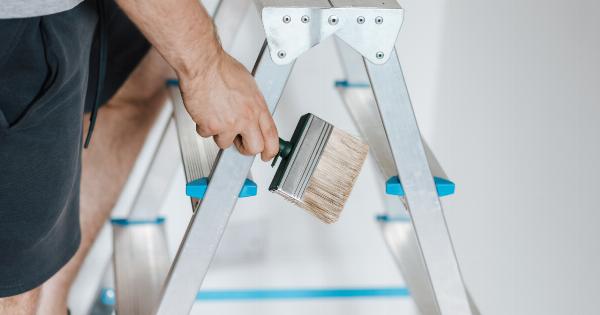Incontinence can be a very personal and sensitive issue for both men and women. It’s a condition that is often misunderstood, and many myths still exist surrounding this condition.
The truth is, incontinence is quite common, and there are many ways to manage and treat it. In this article, we will debunk some of the most common myths surrounding incontinence.
Myth #1: Incontinence Only Affects Seniors
Many people associate incontinence with the elderly, but the truth is, it can affect anyone of any age. Incontinence can be caused by a variety of factors, including pregnancy, childbirth, obesity, certain medications, and nerve or muscle damage.
While it’s true that incontinence becomes more common with age, young adults and even children can also experience this condition.
Myth #2: Incontinence Only Affects Women
While it’s true that women are more likely to experience incontinence than men, it’s a misconception that men don’t get this condition. In fact, studies show that up to 11 percent of men over the age of 65 experience incontinence.
The most common cause of incontinence in men is an enlarged prostate, but nerve damage, certain medications, and urinary tract infections can also cause incontinence.
Myth #3: Incontinence is Normal After Childbirth
It’s true that childbirth can weaken the pelvic floor muscles, which can lead to incontinence. However, incontinence is not a normal or inevitable consequence of childbirth.
It’s estimated that 40 percent of women experience incontinence after childbirth, but there are many ways to prevent or manage this condition, such as pelvic floor exercises, bladder training, and using absorbent pads or underwear.
Myth #4: Drinking Less Fluids Will Help With Incontinence
Limiting fluids may seem like a logical way to prevent or manage incontinence, but it can actually make the condition worse.
Dehydration can cause the urine to become more concentrated, which can irritate the bladder and lead to more frequent urges to urinate. It’s important to stay hydrated to keep the bladder healthy, but it’s also important to avoid alcoholic and caffeinated beverages that can irritate the bladder.
Myth #5: Incontinence is a Normal Part of Aging
While it’s true that incontinence becomes more common with age, it’s not a normal or inevitable part of aging.
Incontinence is a medical condition that can be caused by a variety of factors, and it’s important to seek medical attention if you experience this condition. There are many treatment options available, such as medications, surgery, and bladder training.
Myth #6: Only Surgery Can Treat Incontinence
While surgery is an option for some people with incontinence, it’s not the only treatment option available.
Depending on the cause and severity of the condition, incontinence can be managed with medication, pelvic floor exercises, bladder training, and lifestyle changes. It’s important to work with a healthcare provider to find the best treatment plan for your individual needs.
Myth #7: Incontinence is Embarrassing and Should be Kept a Secret
Incontinence can be an embarrassing and isolating condition, but it’s important to remember that you are not alone. Millions of people worldwide experience incontinence, and it’s nothing to be ashamed of.
There are many support groups, online communities, and healthcare professionals who can offer support and guidance for managing this condition.
Myth #8: Kegel Exercises Are Only for Women
While Kegel exercises are often associated with women, they can also be very effective for men who experience incontinence.
Kegel exercises involve squeezing and releasing the pelvic floor muscles, which can strengthen the muscles that control urination. This can help reduce or eliminate incontinence, and these exercises can be done discreetly anytime, anywhere.
Myth #9: Incontinence is a Sign of Weakness
It’s a misconception that incontinence is a sign of weakness or lack of control. In reality, incontinence is a medical condition that can be caused by a variety of factors, many of which are beyond our control.
It’s important to seek medical attention for this condition and to work with healthcare professionals to find the best treatment plan for your individual needs.
Myth #10: Incontinence Cannot be Prevented
There are many ways to prevent or manage incontinence, depending on the cause and severity of the condition. Some ways to prevent incontinence include maintaining a healthy weight, quitting smoking, avoiding bladder irritants, and staying hydrated.
It’s important to work with a healthcare provider to develop a personalized plan for preventing or managing this condition.
Conclusion
Incontinence is a common and often misunderstood condition, but it’s important to remember that you are not alone. By debunking some of the common myths surrounding incontinence, we hope to raise awareness and promote education about this condition.
Whether you or a loved one experience incontinence, there are many resources available for managing and treating this condition, and it’s important to seek medical attention to find the best treatment plan for your individual needs.































